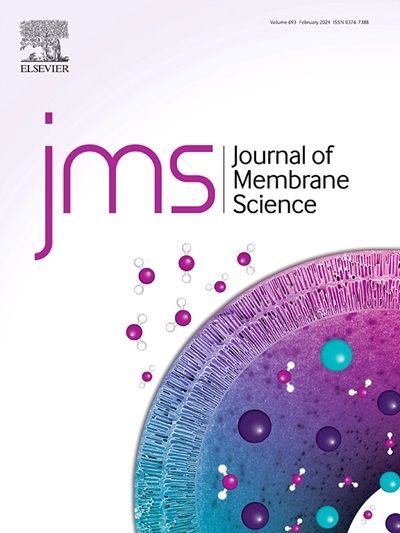Exploring the link between antiscalant and fouling variation from reverse osmosis pilot study
IF 8.4
1区 工程技术
Q1 ENGINEERING, CHEMICAL
引用次数: 0
Abstract
Access to pure water has shaped human civilization for centuries. Growing water scarcity has accelerated the development of sustainable purification technologies like Reverse Osmosis (RO). Despite significant advancements, membrane fouling remains a major bottleneck in RO systems. Scaling, among the different fouling types, became the main challenge in groundwater desalination, leading to the widespread use of antiscalants in RO operations. However, these antiscalants come with challenges, including incompatibility, concentrate disposal, and the risk of synergistic fouling. In response to environmental concerns, polymeric and biodegradable “Green” antiscalants have been studied for RO systems. However, a lack of pilot evaluations and a limited understanding of the antiscalant structure to foulant relationship have significantly hindered RO operational efficiency. This study evaluates three antiscalants in relation to pilot performance, RO membrane fouling, and cleaning strategy. Two commercial antiscalant blends (phosphonate salt and polymeric) and a novel "Green” antiscalant," polyglycerol maleate, were evaluated over an eight-month pilot study, capturing seasonal performance variations. The study revealed distinct, manganese-to aluminum-dominated fouling, depending on the antiscalant interactions. Additionally, a biofouling quantification method and concentrate line analysis are introduced. The cleaning study showed that while some foulants resist simple cleaning techniques, cleaning at a lower foulant uptake can reduce long-term membrane deterioration highlighting the need for optimized cleaning with foulant types. Overall, from feed water analysis to cleaning, this study provides a complete operational picture of fouling and a framework for future antiscalant-RO system studies.

求助全文
约1分钟内获得全文
求助全文
来源期刊

Journal of Membrane Science
工程技术-高分子科学
CiteScore
17.10
自引率
17.90%
发文量
1031
审稿时长
2.5 months
期刊介绍:
The Journal of Membrane Science is a publication that focuses on membrane systems and is aimed at academic and industrial chemists, chemical engineers, materials scientists, and membranologists. It publishes original research and reviews on various aspects of membrane transport, membrane formation/structure, fouling, module/process design, and processes/applications. The journal primarily focuses on the structure, function, and performance of non-biological membranes but also includes papers that relate to biological membranes. The Journal of Membrane Science publishes Full Text Papers, State-of-the-Art Reviews, Letters to the Editor, and Perspectives.
 求助内容:
求助内容: 应助结果提醒方式:
应助结果提醒方式:


